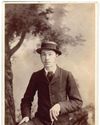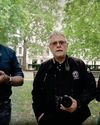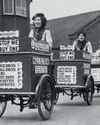
Master of nature
Bell Hall
Ben is a multi-award-winning nature and landscape photographer with an impressive portfolio so check out his website. While you’re there, take a look at his courses and workshops that cater for beginners upwards. Benhallphotography.com
I shoot a wide range of nature subjects but if photographers want to shoot fast-moving subjects there’s huge potential and opportunities with birds.
I use Canon DSLRs, the EOS-1D X Mark II and the EOS 1D X Mark III. I haven’t gone mirrorless yet but I will next year. I’ve tried the EOS R3 with its animal/eye detect and it worked really, really well. It just locks on the eye so I can leave the camera to look after focusing and I’m free to concentrate on composition.
I use the EF 300mm f2/8 for flight shots because its AF is so quick but also the EF 70-200mm f/2.8. It is a bit short for wildlife but it’s great when I can get close or when shooting bigger birds such as geese and swans. For smaller birds, it would be the 300mm or even the 500mm f/4.
My favoured focus zone is the expanded single-point setting where there is one zone in the centre and four extra zones round it and this gives a little more margin for error when tracking the bird.
Six years ago I switched to back-button focus. It took a lot of getting used to but I
forced myself to use it. The advantage with the AF-ON button is that it is two controls in one. I leave it set to AI servo so when I hold it down with the thumb, the camera is focus tracking but if I push it down once to focus and then release it, I can recompose without the focus changing when I take the shot.
This story is from the {{IssueName}} edition of {{MagazineName}}.
Start your 7-day Magzter GOLD free trial to access thousands of curated premium stories, and 9,000+ magazines and newspapers.
Already a subscriber ? Sign In
This story is from the {{IssueName}} edition of {{MagazineName}}.
Start your 7-day Magzter GOLD free trial to access thousands of curated premium stories, and 9,000+ magazines and newspapers.
Already a subscriber? Sign In

140 years of change
AP has become the world’s oldest surviving consumer photo magazine because we have moved with the times, says Nigel Atherton

Preserving history in platinum
A deep dive into the meticulous art of platinum printing, and the collaboration between the Royal Geographical Society and Salto Ulbeek. Mike Crawford explores how they brought historical photographs to life with enduring beauty and precision

Life in the past lane
What was life like for an amateur photographer in 1884? John Wade takes a trip back in time

Choice cuts
How many trillions of photographs must have been taken in the past 140 years? Amy Davies asked some of our regular contributors for their favourites....a difficult task, to say the least

How good a camera can you buy for just £140?
Three members of the AP team see what they can find for the money

Round Five: The Best of the Rest
The APOY judges choose their favourite images that didn’t make the top ten of our Landscapes category

Amateur Photographer of the Year
Here are the top ten images uploaded to Photocrowd from Round Five, Landscapes, with comments by the AP team and our guest judge

FILM STARS A lifetime of landmarks
Cameras that hit the headlines between then and now. John Wade is your guide

140 years of Amateur Photographer
As AP celebrates its 140th birthday next month, Nigel Atherton looks back at its glorious past

John Wade considers...World War II: Home Front 1940, by A.J O'Brien
Say the word 'Wall's' to those of a certain age and two things spring to mind: sausages and ice cream.